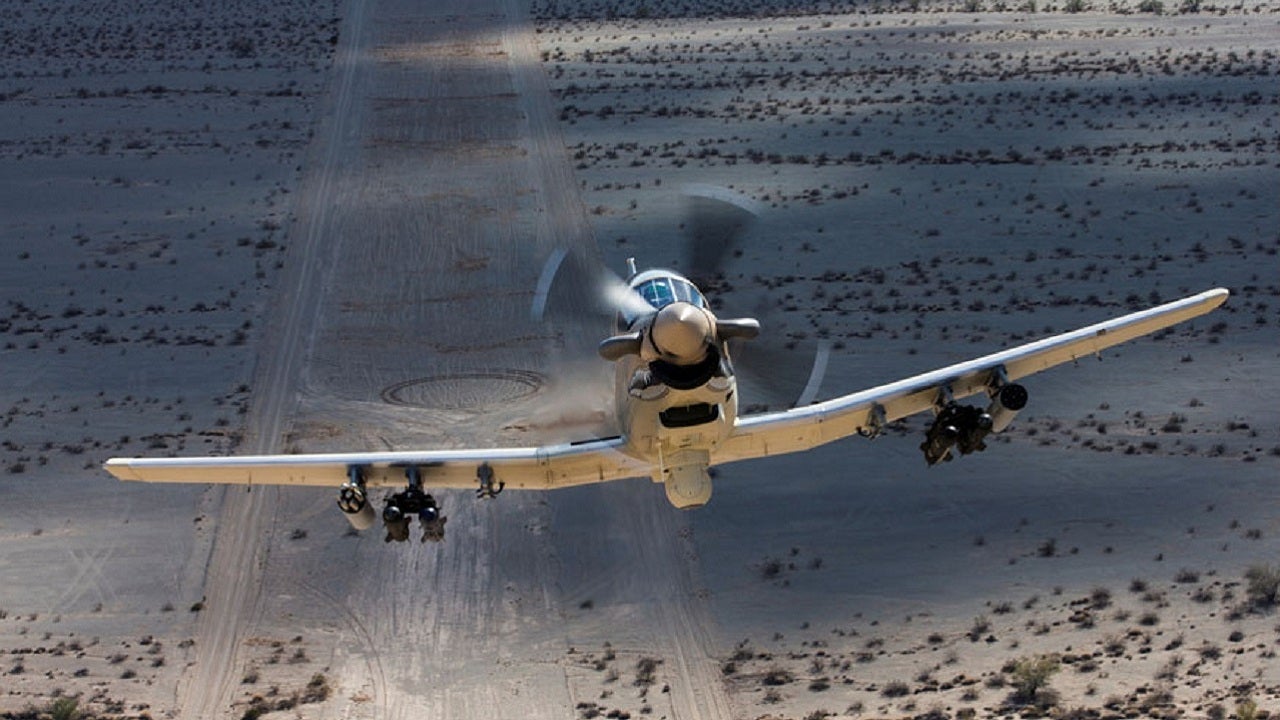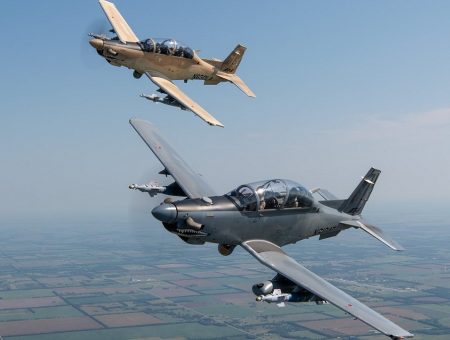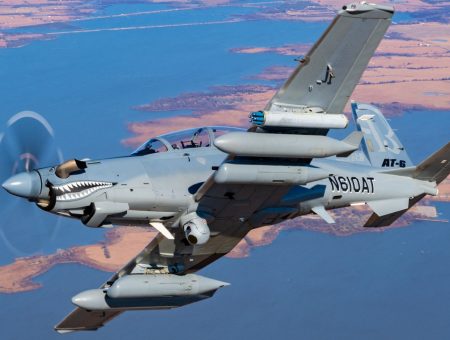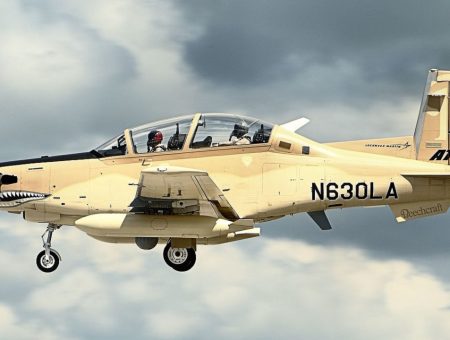
The AT-6 Wolverine aircraft is developed by Beechcraft, a Textron Aviation brand. It is tailored to meet the light attack requirements of the armed forces worldwide.
With its flexible weapons and external fuel tank configurations, the AT-6 Wolverine light attack/armed reconnaissance aircraft offers warfighters an ideal solution to engage targets in low-intensity combat missions.

Discover B2B Marketing That Performs
Combine business intelligence and editorial excellence to reach engaged professionals across 36 leading media platforms.
The multi-mission aircraft is designed to meet the demanding requirements of warfighters while accommodating 95% of the aircrew population. A full suite of synchronised ground-based training capabilities, as well as an established global logistics infrastructure, further enable AT-6 to outperform its contenders.
Army Technology looks at what makes the Beechcraft AT-6 Wolverine an affordable, yet effective light attack aircraft.
Low maintenance makes AT-6 Wolverine affordable for light attack missions

AT-6 Wolverine leverages the proven capabilities of Beechcraft T-6 series that was preferred by the US Air Force (USAF)/US Navy Joint Primary Aircraft Training System (JPATS) programme. It offers an 85% parts commonality with the T-6 Texan II and is made available to customers at a fraction of the acquisition, maintenance and training costs of conventional combat aircraft. It currently costs less than $1,000 an hour to operate the AT-6.
The USAF continues to evaluate low-cost, close-air support platform options that may help reduce the burden on front-line fighter squadrons. Textron Aviation received a $70.2m contract from the USAF to deliver two AT-6 Wolverine aircraft, in March 2020.

US Tariffs are shifting - will you react or anticipate?
Don’t let policy changes catch you off guard. Stay proactive with real-time data and expert analysis.
By GlobalDataMost versatile light attack aircraft in its class
The Beechcraft AT-6 Wolverine light attack aircraft is compatible with more than 66 standard load configurations, in addition to non-standard asymmetric configurations, making it the most versatile mission-ready platform among its counterparts.
Controlled by Lockheed Martin’s A-10C mission computer, along with modern glass cockpit and flight management systems, the AT-6 Wolverine is the most effective light attack offering available in the market.
No dearth of weapons for combat missions

Seven dedicated hard-points, three each on the two wings and one under the central fuselage, allow the AT-6 Wolverine to carry more than 13 general-purpose and precision munitions for close air support and light attack missions.
The fuselage-mounted hard-point holds the MX-15Di sensor suite, while the remaining weapon stations can carry 0.50 calibre guns, AGM-114 Hellfire laser-guided air-to-surface missiles, MK-81 and MK-82 general-purpose bombs, GBU-12 and GBU-58 Paveway II, GBU-49 and GBU-59 enhanced Paveway II laser-guided bombs, GBU-38 inertia-aided munitions, APKWS, TALON and GATR laser-guided rockets, practice bombs, flares, and rockets.
All the weapons on the AT-6 are integrated using the US military standards with Seek Eagle certification and are interfaced with the plug-and-play weapons management system architecture.
The wing tip-mounted sensors enable the detection of incoming missiles while the crew can launch flares or chaff to deceive them.
Furthermore, AT-6 is the world’s first fixed-wing aircraft to fire laser-guided rockets.
Always mission-ready
The L3 Wescam MX-15D multi-sensor suite on the AT-6 Wolverine allows it to easily perform light attacks, armed reconnaissance, and counter-insurgency (COIN) missions. The sensor suite integrates colour and IR cameras, laser designator, laser illuminator, and laser rangefinder.
The light attack aircraft is also suitable for close air support (CAS), forward air control, armed overwatch, strike coordination and reconnaissance, maritime patrol, airborne interdiction, intelligence, surveillance and reconnaissance (ISR), flight training, and homeland security missions.
An optimal combination of power and performance

The AT-6 Wolverine is installed with a 1,600shp Pratt & Whitney Canada PT6A-68D engine, offering a higher power-to-weight ratio compared with similar aircraft in its class.
The AT-6 Wolverine has a higher airspeed and Mach envelope (.67 Mach) to hold and dispose of more external systems than other light attack aircraft of its size.
Combined with a low centre of gravity and smaller taxi turn radius, the superior power-to-weight ratio allows the aircraft to operate from austere, unimproved airstrips.
AT-6 Wolverine Tech Specs and design
The fixed-wing aircraft measures 10.1m-long and 3.2m-high while its wingspan and wing area are of 10.4m and 16.60m² respectively. Made of composite materials, the airframe of the low-wing monoplane provides a basic weight of 2,671kg and enables the aircraft to take-off/land with a maximum weight of 4,536kg.
The AT-6 Wolverine has a maximum internal fuel storage capacity of 544kg and can be mounted with two external fuel tanks to hold 932kg of fuel in total. The maximum usable fuel load carried by the aircraft when fitted with four external fuel tanks is 1,319kg.
The futuristic design of Wolverine’s flight deck integrates a digital glass cockpit and head-up display, tactical navigation, sensor display, weapons management, and weapons delivery modes. Information is presented by three 5in x 7in multi-function displays. The Martin Baker ML16LA ejection seat aboard the aircraft provides zero-airspeed, zero-altitude safe escape capability.
The cockpit is further equipped with F-16 hands-on-throttle-and-stick (HOTAS), helmet-mounted cueing system, moving map, sensor displays, and targeting system. Communications are supported by UHF satellite communications (SATCOM) and a protected voice and data link.
The light attack aircraft has a maximum speed of 827km/h while the four external tanks ensure a maximum ferry range of 3,195km.





